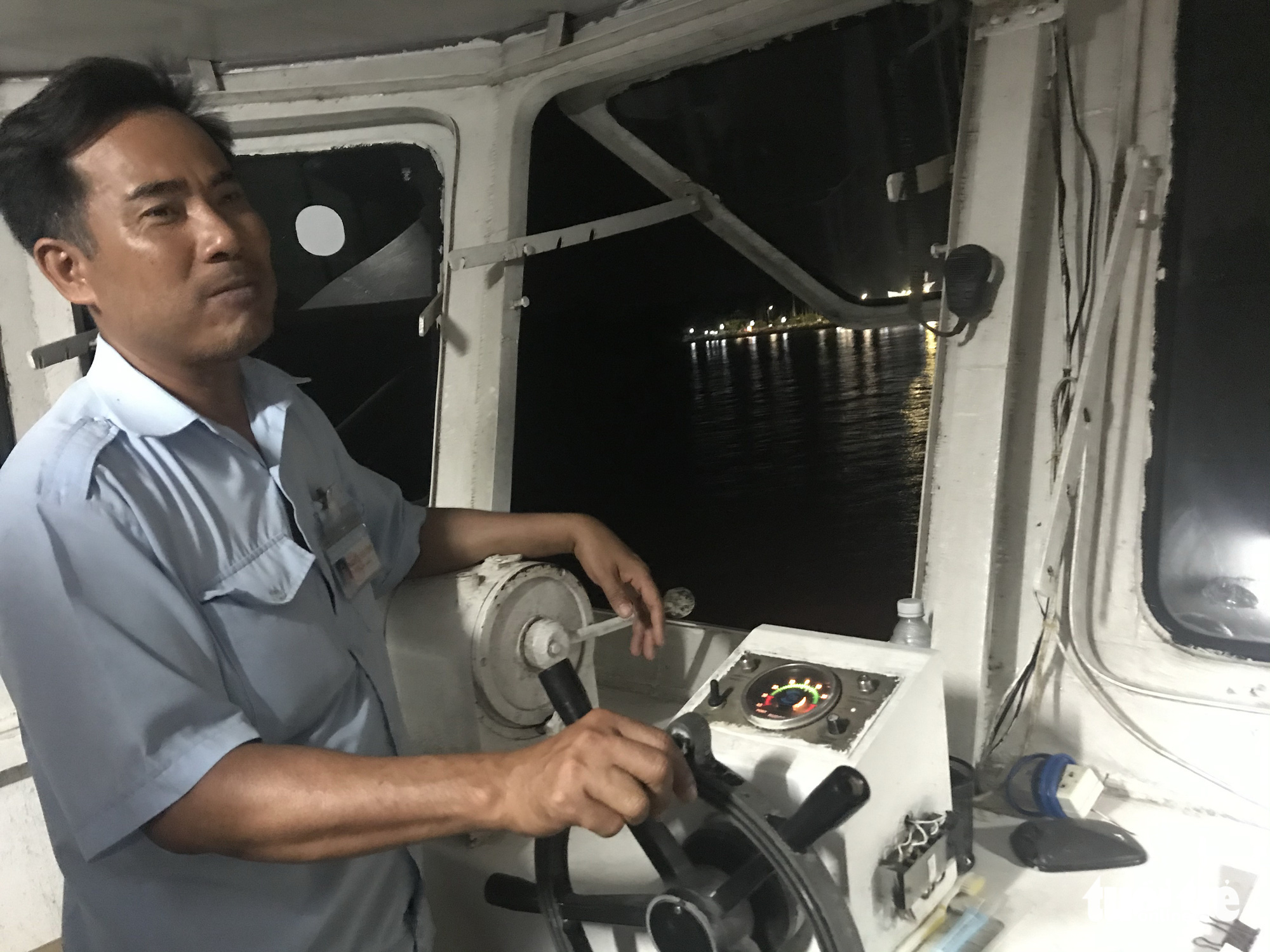The Cao Lanh Ferry, located in Dong Thap Province in Vietnam’s Mekong Delta, is no longer around following its official shutdown last week after nearly a century of service, but it will live on in the locals’ hearts as a relic of the past and a link to the region’s culture and history.
The ferry, closed on August 24, provided transport services between Cao Lanh City and Lap Vo District in Dong Thap, which are separated by the Tien (Front) River.
The carrier, however, was much more than a means of transport.
Many locals, ferry staff, and vendors relied on the daily ferry crossings of the people they brought.
The ferry was seen as a fixture in the community, filling their childhood memories and shaping the local culture.
Cao Lanh Ferry Station was the region’s latest terminal to have stopped operations following the closure of Vam Cong, one of its counterparts, in May last year.
The ferries were integral to the socio-economic growth of each town they served, particularly as large bridges were only introduced in relatively recent times.
Given the shutdowns, the feelings of nostalgia have cast a gloomy shadow over those who have spent decades maintaining the route.
Farewell to a faithful friend
At 9:20 pm on August 23, the last ferry docked at Ward 6 in Cao Lanh City, the capital of Dong Thap Province, wrapping up its century-long voyage.
Three continuous toots to signal the routine docking sounded like a farewell to its passengers.
Nguyen Van Tinh, the 44-year-old captain of a 60-metric-ton ferry, disembarked from his last ferry ride after taking some last photos of the terminal.
The ferry terminal was unusually crowded on its last operation day, as local residents and visitors flocked to witness its very last moments.
Apart from his two-year apprenticeship starting in 2003, Tinh had worked as a ferry captain for over 15 years.
“My heart is sinking though there are so many passengers today. It’s undeniable that ferries will be a thing of the past once bridges are built, but goodbye is quite hard to say,” Tinh shared.
“No matter which ferry station I will be transferred to, memories of Cao Lanh Ferry will never fade in my mind."

Tinh recalled how busy the ferry terminal was just a few years ago, with many of its passengers being students due to its proximity to a local university.
“Before and during the Tet [Lunar New Year] holiday and Ba Chua Xu [Holy Mother of the Realm] Festival, there would be line-ups of vehicles stretching for kilometers. It was hard work but we were thrilled serving as a bridge to their year-end family reunions,” Tinh recounted.
Ba Chua Xu is a prosperity goddess who is worshipped in her temple snuggled at the foot of Sam Mountain in Chau Doc District, located in neighboring An Giang Province, as part of Vietnamese folk religions.
A three-day festival is held on the 23rd day of the fourth lunar month for pilgrims from across the region to pay tribute.
Prior to the completion of Cao Lanh Bridge, Cao Lanh Ferry boasted a round-the-clock fleet comprised of ten ferries with capacities of up to 100 metric tons.
The daily traffic volume averaged more than 13,600 motorbikes and 2,000 automobiles.
Since the Cao Lanh Bridge was opened to traffic in May 2018, only two small-capacity ferries remained in operation from 4:30 am to 9:00 pm, transporting approximately 2,000 vehicles on a daily basis.
With each ride averaging 15-18 minutes, Tinh performed 60-64 rides each day prior to the ferry terminal shutdown.
“After Cao Lanh Bridge was inaugurated, I had to part with several staff members, who were repositioned to other ferry terminals such as Sa Dec and Phong Hoa [also located in Dong Thap Province]. I’m staying put to look after the [Cao Lanh] terminal until I get moved to another place,” he said sadly.
Tran Van Tinh, another ferry captain, shared his colleague Tinh’s nostalgia, revealing he had been transferred back to Phong Hoa Ferry.
This is not the first time his route has been shut down.
He had previously worked at Vam Cong Ferry before getting moved to Dai Ngai Ferry in Soc Trang Province, which then got closed down when a bridge opened up nearby, leading his colleagues to joke that any terminal he is transferred to next is in real trouble.
Tinh later switched to Phong Hoa Ferry to be closer to his home, and began his job as a mechanic at Cao Lanh Ferry around two months ago.
“At least I’ve got transferred to another ferry because I’m so glad to continue my job on the rivers,” he said.
Other workers who have devoted their lives to the Cao Lanh ferry crossing expressed a similar sadness, explaining they would miss the ferry’s bustling atmosphere during rush hours and public holidays.
A means of livelihood
Ho Van Buu, a 49-year-old conductor who had worked at the terminal for nearly 20 years, was also concerned about vendors and stall owners who make a living in the surrounding area.
Among them is Nguyen Thi Thoi, who runs a stall with dumplings and soft drinks near the terminal. As her number of clients has dropped in recent years, the 64-year-old woman has relied on odd jobs including peeling cashew nuts in her free time to supplement her income.
“I’ve been selling things around the terminal for the past 33 years, even before the inauguration of My Thuan Bridge [in 2000]. I previously ran a sidewalk eatery before switching to the dumpling and drink stall due to the drop in customers. Clients will come few and far between after the [Cao Lanh] ferry line stops,” she shared.
My Thuan Bridge's opening also ended the eponymous ferry service around that time.
The money earned allowed Thoi to provide for her two children and afford them a proper education.
Despite the cessation of the ferry line, the senior woman said she would still stick to her stall as she had no other choice.

Phuong Thi My, 48, a lottery peddler around the terminal, also said the income earned from the tickets supplemented her husband’s meager earnings as a garden keeper.
“With around 150 [lottery] tickets sold to ferry passengers every day, I can earn over VND100,000 [US$4] for my four-member family. Sure I will be able to sell fewer tickets once the ferry line stops,” she said sadly.
People who live in the surrounding area also feel a sense of nostalgia for the ferry line and similar sadness for parting with the ferry staff whom they consider their own next of kin.
“I’m not traveling on the [Cao Lanh] bridge today and instead come here to take the last ferry ride. I’ve ridden on the ferries since I was a young child, and I’ve been on a first-name basis with all the crew, staff, and vendors here. Separation is always hard for us to accept,” Nguyen Bao Son, a local resident, shared.
Four generations working as ferry captains
Nguyen Van Son, 40, takes great pride that four generations of his family were dedicated to Cao Lanh Ferry as ferry captains.
“My great grandfather worked as a captain back in 1934, followed by my paternal grandfather. My father and I later followed suit. We all worked as ferry captains. Upon the inauguration of Cao Lanh Bridge, I was transferred to Sa Dec Ferry, but still consider Cao Lanh Ferry my home,” Son shared.
Cao Lan Ferry history
The Cao Lanh Ferry was put into operation nearly 100 years ago. Its original name was Tan Tich and was later changed to Bac Cao Lanh.
The Dong Thap People’s Committee changed the name of the ferry service to Cao Lanh in 1992.
In May 2018, the $307 million Cao Lanh Bridge was inaugurated to provide a faster way to travel between Cao Lanh City and Lap Vo District, as well as improving traffic connectivity in the Mekong Delta.
The structure, which is two kilometers long and 25 meters wide, features four lanes for motorized vehicles and two for bicycles, with the design speed of 80 kilometers per hour and a navigation clearance of around 38 meters.
The operation of the Cao Lanh Ferry was thus downsized to a few journeys a day.
However, many residents still preferred to use the ferry service with ease, as they would need to cover a distance before being able to cross the Cao Lanh Bridge.
Like us on Facebook or follow us on Twitter to get the latest news about Vietnam!


















































